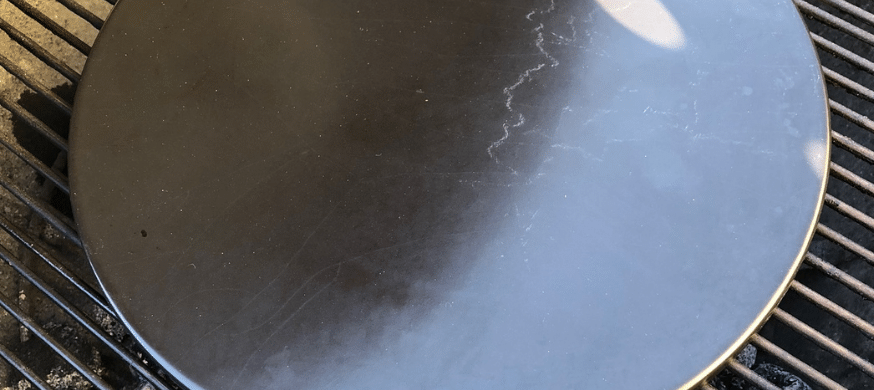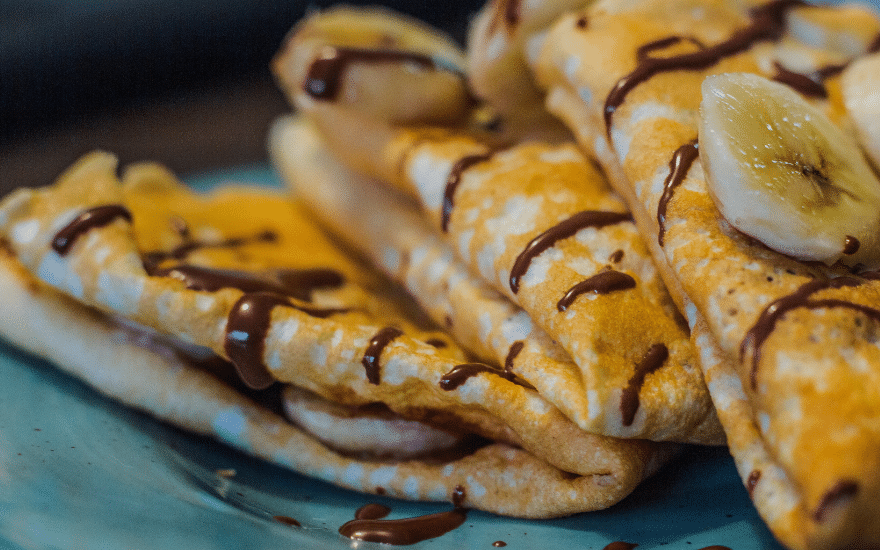What is important when cleaning the crepes maker?
Crepes makers are available in a wide variety of designs and sizes. Crepes makers can have integrated or removable baking surfaces. The heating plates can also be made of cast iron or non-stick coated material. Depending on the design, crepe makers are more or less easy to clean.
Here is an overview of some of the distinguishing features of the individual crepe makers that come into consideration when cleaning:
Heating plate made of cast iron or non-stick coated material
Heating plates removable or integrated in the appliance housing
Heating plates that are flat throughout or curved at the edges
Small and compact appliances or large professional crepe makers (XL)
With fixed or detachable mains cable
Easy-to-clean crepe makers or appliances that are less easy to clean due to their design (e.g. due to protruding edges or other unfavorable designs)

Cleaning cast iron plates / cast iron pans
In the past, crepe makers were exclusively equipped with cast iron plates. Today, these models are rather rare. However, crêpes makers with cast iron plates can still be found in larger catering establishments. In the private and smaller catering sector, however, non-stick coated plates are almost exclusively used today. There is of course a reason for this. Cast iron plates heat up more slowly than non-stick coated plates. And they are more difficult to handle and clean than the lighter and smoother non-stick coated plates.
Cast iron surfaces are therefore mainly found on tried and tested cast iron pans, which are still the ideal alternative to crepes maker pans. In terms of cleaning, cast iron surfaces naturally have the advantage over non-stick surfaces that you can scrub to your heart’s content, which should of course be avoided with the more susceptible non-stick surfaces. Cast iron pans and cast iron surfaces can be cleaned without hesitation with a coarse sponge or even a pot scraper. After drying, rub the surface with a little kitchen paper and a drop of oil to prevent rusting. Unfortunately, cast iron plates are very susceptible to rust.
Tip for easy cleaning of cast iron and steel surfaces:
The easiest way to clean cast iron plates on crepe makers is with special cleaning stones for iron crepe makers and grill plates.
These special grating stones easily remove incrustations and batter residues and are suitable for cleaning crepe plates (made of cast iron), frying pans & roasters, grill grates, tiles and other surfaces. Even burnt-on residues can be easily removed with a cleaning stone.
But be careful: cleaning stones are not suitable for cleaning non-stick surfaces!

Cleaning non-stick heating plates
Non-stick coated heating plates are even easier to clean than cast iron plates. A distinction must be made between integrated and removable heating plates. Integrated non-stick coated baking plates are best cleaned with a damp cloth or sponge and a little washing-up liquid. The plates should only be cleaned after they have cooled down completely, as unattractive limescale stains can remain on slightly heated plates due to the rapid drying of the rinsing water when rinsing. After rinsing, the plates should be wiped dry with a dry cloth or some kitchen paper.
Many removable hot plates can even be cleaned in the dishwasher, which makes cleaning even easier. However, you should always read the description first to check whether or not the corresponding plates are really dishwasher-safe. If you want to be on the safe side, you should also only rinse the removable heating plates under the tap with a cloth or sponge. This is because even robust non-stick coatings can come off in the dishwasher over time due to the high temperature, detergent, jets and contact with the dishwasher grill and other dishes.
Cleaning the housing
A damp cloth is usually sufficient for cleaning the housing of a crepes maker. Particularly with crepe plates with high edges, it is only in rare cases that some crepe mixture spills over the plate and onto the housing. As the housing is made of easily washable material, even coarse soiling can be easily removed. After wiping with a damp cloth, however, you should go over the housing again with a dry cloth or some kitchen paper to remove unsightly water marks.
Crepes makers are electrical appliances and direct contact with water should therefore be avoided. This means that these electrical appliances should always be cleaned outside the sink and never directly under the tap. You should also make sure that when cleaning with a damp sponge or cloth, the sponge or cloth is not too saturated with water so that excess water cannot drip into the ventilation slots and onto the electrical parts during cleaning.
Cleaning accessories for making crepes
Many crepe makers come with a spatula and batter spreader as standard. The spatulas are often made of durable plastic so that they can be easily cleaned in the dishwasher. However, dough dividers made of wood or wooden spatulas should be washed by hand, as wood can swell in the dishwasher due to prolonged exposure to water. Wooden spatulas or dough dividers made of wood could then become porous and brittle over time.
Crepes maker comparison
We have now looked in detail at the cleaning of the individual models. But which crepes maker is the easiest to clean?
There are a few things to consider when buying a crepes maker. Cleaning plays a subordinate role here, as most crepes makers are naturally easy to clean. In our crepes maker comparison, we present some of the most popular models that are also easy to clean. The comparison also focuses on ease of use in combination with a high level of functionality.